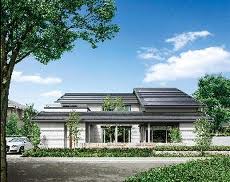Osaka Gas and Sekisui House have been cooperating in an experimental project for the past year and a half to answer the burning question “Yes, but how well does it actually work?” I speak, of course, of the rising trend of smart homes and communities.
The partnership between Osaka Gas and Sekisui House (two well-known names in Japan) started back in February 2011, with the Smart Energy House project. The idea was to test out ways to reduce both reliance on outside sources of energy and also carbon dioxide emissions — in other words, meet energy efficiency goals — and the test parameters involved a lot of batteries.
On practical evaluations and multi-type battery systems
The first step was building and equipping the house – with a 700W natural gas fuel cell, a 5.08kW solar cell, and 3.5kWh lithium ion batteries. A HEMS (home energy management system) was installed to balance out the three power sources, and various bits of the house were constructed with energy efficiency in mind (think stuff like LEDs everywhere).
The second step was to stick a three-person family in the house and watch them for a year (it’s less creepy than it sounds). The experiment ran from July 1st, 2011 to June 30th, 2012. After it was completed, all the information gathered was carefully analysed.
Just the facts, ma’am – analysing results
According to the partnership’s numbers, power consumption was reduced by 88 per cent. The amount of power purchased from outside the home was 584kWh – average in Japan for a three-person household for a one-year period is 4830kWh. Reducing carbon dioxide output was even more successful. Specifics on how, exactly, this was accomplished has not been published (at least, not where I can find them), but the partnership claims that the house generated a negative 137kg over the course of a year. As a comparable household generates something like 4770t of CO2 per year, they’re calling it a 103 per cent reduction. Also not published were initial costs of the batteries installed, or the cost of potential replacements.
Although the one-year experiment is now complete, Osaka Gas and Sekisui House aren’t finished. Research is slated to continue through the end of 2014, focusing on better balancing and control of the battery systems. Further experiments with incorporating electric cars into the house grid are on the table, as well as a return to using proper ventilation and pure solar heat instead of total climate control of closed-off rooms to manage comfortable living spaces.
The current project schedule calls for these houses to go on the market in 2015. I wouldn’t go back to Japan for one, but I’d be curious about similar projects in the US.
![]() Clean Technica (http://s.tt/1kcwQ) – Reproduced with permission.
Clean Technica (http://s.tt/1kcwQ) – Reproduced with permission.










